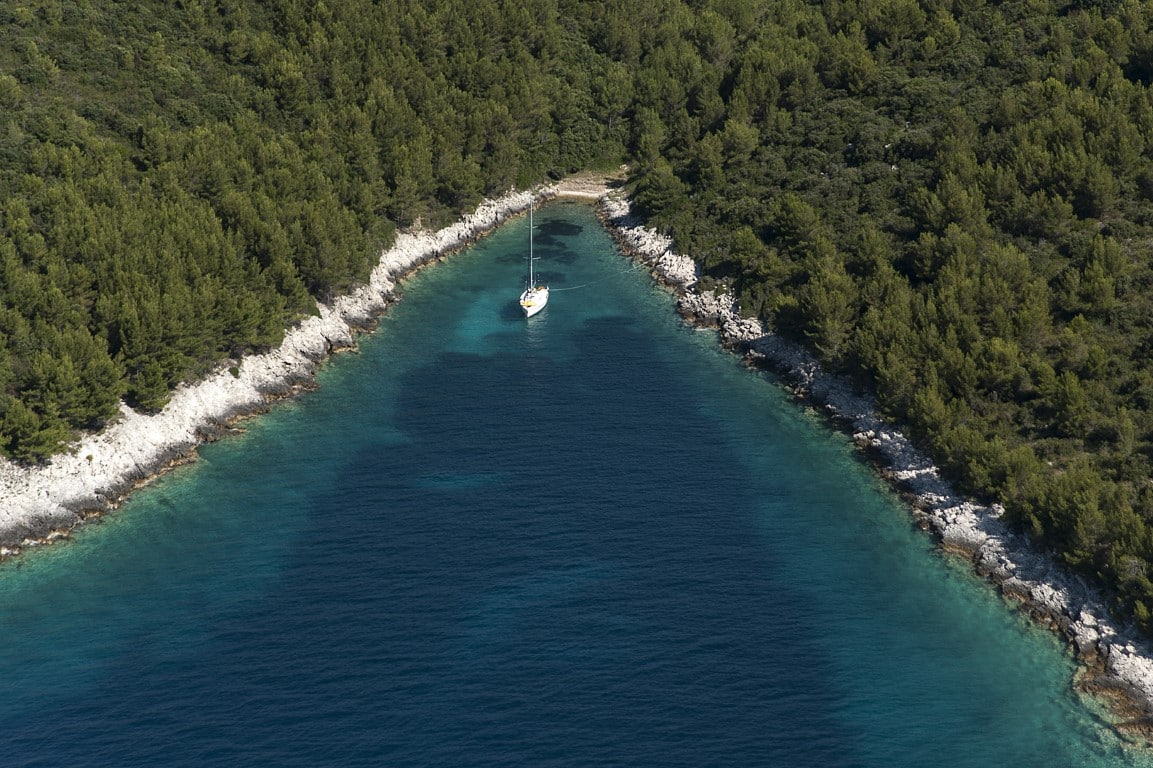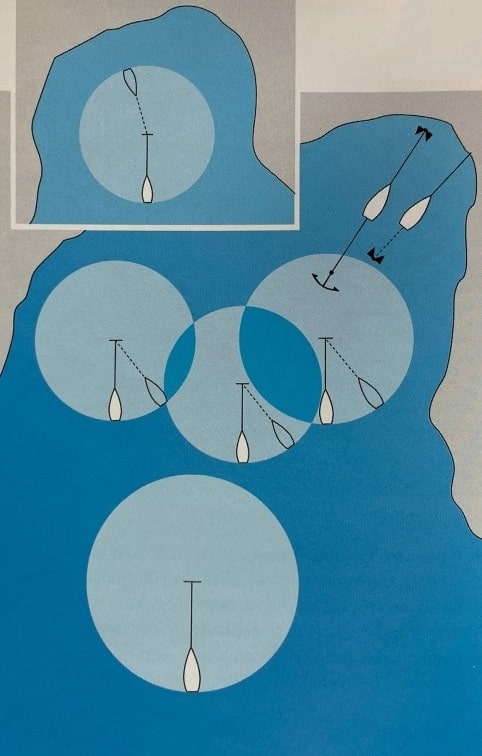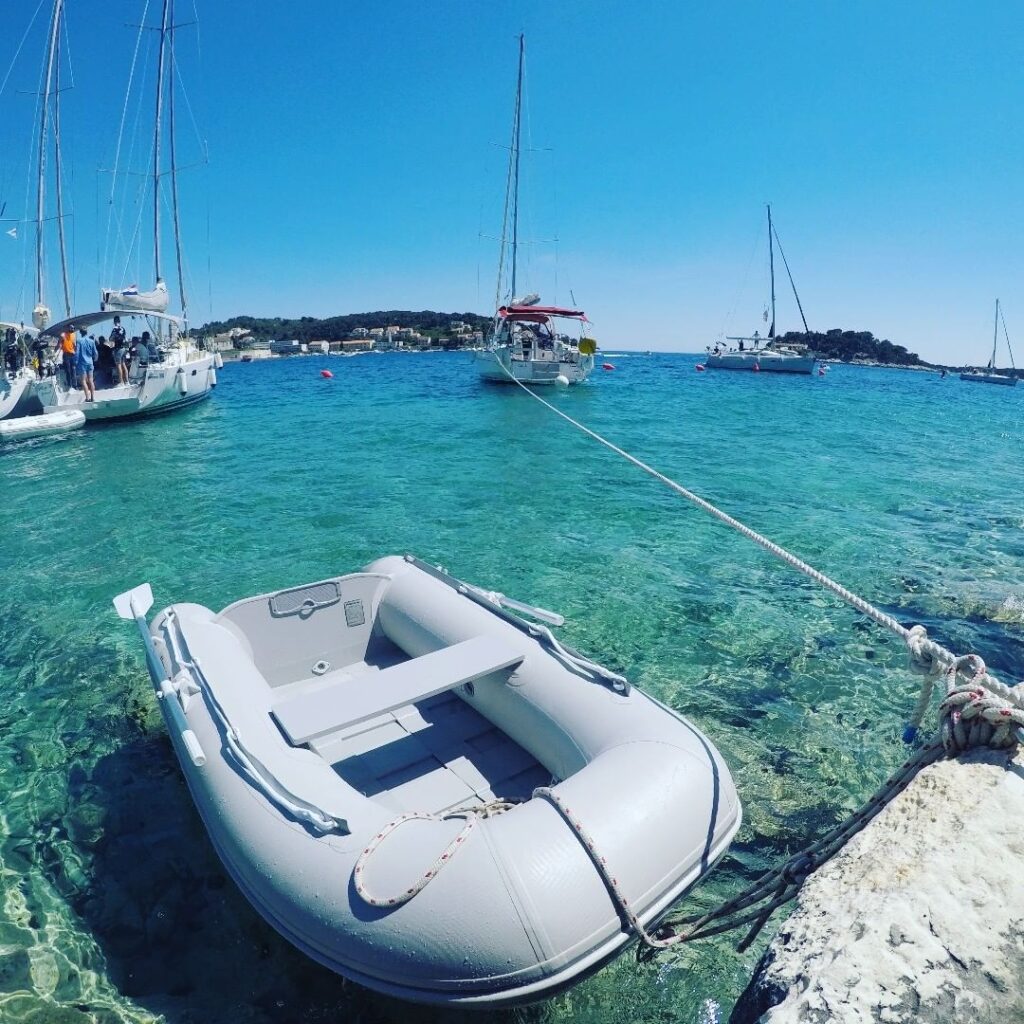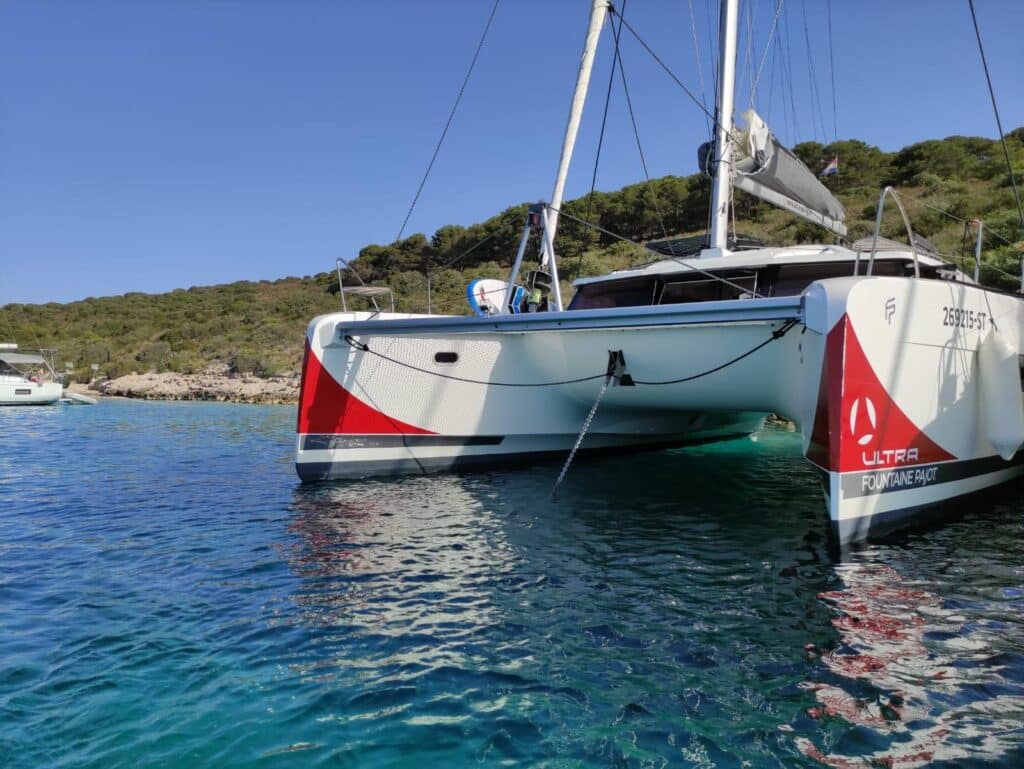
- Sailing Croatia tips
-
by Ultra Sailing Team
It’s time to drop the anchor when no berth is available. One of the most important sailing skills that every skipper should acquire is anchoring. In training, it typically follows docking and undocking, but in practice, you’ll use it frequently when sailing in Croatia.
Numerous stunning bays in Croatia are ideal for overnight anchoring if the weather permits. In addition to providing you with a tranquil experience in the middle of nature, spending the night at anchor also allows you to avoid paying marina and harbor fees.
Knowing how to anchor correctly will make your sailing in Croatia safer, more enjoyable, and more affordable.
Many sailors think anchoring is simple: stop where you like and drop the anchor. But it’s not always that easy. Poor anchoring technique can lead to stress, drifting, or even damage to your boat or others nearby.
To anchor safely, it’s important to understand the basics and follow a few simple steps. Anchors are also useful when turning in narrow spaces or mooring close to shore, especially if there’s wind pushing you toward land.
Tip: When your boat is at anchor, it’s not securely moored like in a marina. Always keep at least one crew member on board, and don’t leave the boat completely unattended. It’s fine to swim or relax nearby, but avoid going ashore for long periods, as wind or current can easily make the boat drift.
Choosing the right spot to anchor
When anchoring in areas with strong winds or currents, it’s important to find a safe and well-protected spot. Modern digital plotters and navigation apps make this much easier today, showing both depth and seabed type.
Before dropping anchor, make sure your anchoring gear is ready, the chain neatly arranged and the anchor free to lower at any moment. On most of the yachts, an electric windlass is usually used to lift the anchor, but keep in mind that it consumes a lot of power. It’s best to use caution when raising the anchor to avoid draining the batteries.
The anchor chain plays an important role: its weight helps the anchor dig into the seabed and keeps the boat steadier, even when the wind picks up. As a rule of thumb, use at least three times the water depth in chain. Adjust this depending on the conditions and space available.
When anchoring in a bay or port, always consider the boat’s swinging area. The circular space your boat will move within as the wind or current changes. Make sure there are no other boats, buoys or shallow spots within that circle.


If you’ve ever watched boats anchored closely together in places like Hvar or Vis, you’ll notice how they all gently rotate around their anchors as the wind shifts, perfectly synchronized when done correctly. Safe distances and proper scope make all the difference between a calm night at anchor and a stressful one.
How to anchor a sailboat or catamaran
Whether you’re anchoring in a quiet bay on Brač or near a popular island like Hvar, taking your time and doing it properly ensures a stress-free stay.
Prepare the anchor and crew
Before approaching the anchorage, ensure your anchor, chain, and rope are ready and strong enough for your boat’s size. The crew member at the bow should prepare the anchor and check that the chain runs freely.
Position the boat
The skipper slowly stops the boat and turns the bow into the wind. This makes it easier to control the boat’s movement and drop the anchor precisely where you want it.
Drop the anchor
Once the boat has stopped, the skipper gives the signal to drop anchor. The crew lowers the anchor smoothly until it reaches the seabed.
Set the anchor
As the skipper gently reverses, the crew continues to lower the chain. When the chain tightens and starts to vibrate, it means the anchor is digging in. Once it feels firm and the boat stops moving backward, the anchor is holding.
Check and secure
Release a bit more chain for safety, depending on the depth and wind conditions. If you plan to stay overnight, don’t forget to switch on the anchor light so your boat remains visible to others in the bay.
Anchoring near shore
If you plan to tie the stern ashore, drop the anchor at least four to five boat lengths from the coast. This gives you enough space to maneuver and keeps the chain at the right angle. Tying the stern to the shore can be useful when staying overnight in a bay where wind direction may change. Always tie to a solid rock or natural fixture (never to trees or vegetation) and make sure your lines don’t disturb anyone nearby.


Using two anchors
All our charter boats in Croatia carry a spare (reserve) anchor, which is usually lighter and equipped with a shorter chain than the main one. In stronger winds or tight spaces, two anchors can add extra security. Drop both from the bow at about a 25-degree angle to each other. If you’re unsure about holding power, drop the second anchor around 10 meters behind the first one to strengthen its grip.
Final thoughts on anchoring in Croatia
Anchoring is one of those skills that gets easier with practice. Once you master the basics, you’ll quickly learn how to read each bay, recognize the best spots, and feel when your anchor is holding well.
Croatia offers countless safe and scenic anchorages, from peaceful coves in the Kornati Islands to hidden bays around Korčula or Vis. With the right technique and a bit of seamanship, you can spend quiet nights surrounded by nature, far from the crowds and marina noise.


One more thing to keep in mind: your anchor windlass is one of the most important (and expensive) pieces of equipment on board. Misuse or neglect can easily lead to damage or even the complete loss of the anchor. Always secure the chain after dropping anchor, use a snubber line to reduce strain, and never use the windlass to pull the boat forward. For more detailed information, check out our blog about how to prevent damage to the anchor, windlass, and other essential parts of your charter boat.



